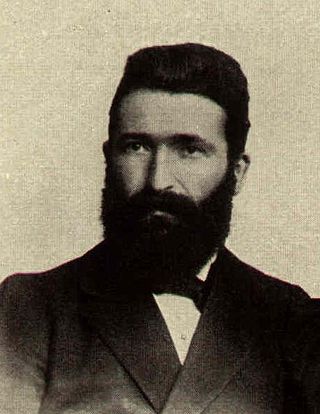Related Research Articles

The Uyghurs, alternatively spelled Uighurs, Uygurs or Uigurs, are a Turkic ethnic group originating from and culturally affiliated with the general region of Central and East Asia. The Uyghurs are recognized as the titular nationality of the Xinjiang Uyghur Autonomous Region in Northwest China. They are one of China's 55 officially recognized ethnic minorities. The Uyghurs are recognized by the Chinese government as a regional minority and the titular people of Xinjiang.

East Turkestan or East Turkistan, also called Uyghuristan, is a loosely-defined geographical region in the northwestern part of the People's Republic of China, which varies in meaning by context and usage. The term was coined in the 19th century by Russian Turkologists, including Nikita Bichurin, who intended the name to replace the common Western term for the region, "Chinese Turkestan", which referred to the Tarim Basin in Southern Xinjiang or Xinjiang as a whole during the Qing dynasty. Beginning in the 17th century, Altishahr, which means "Six Cities" in Uyghur, became the Uyghur name for the Tarim Basin. Uyghurs also called the Tarim Basin "Yettishar," which means "Seven Cities," and even "Sekkizshahr", which means "Eight Cities" in Uyghur. Chinese dynasties from the Han dynasty to the Tang dynasty had called an overlapping area the "Western Regions".

Uyghur or Uighur is a Turkic language written in a Uyghur Perso-Arabic script with 8–13 million speakers, spoken primarily by the Uyghur people in the Xinjiang Uyghur Autonomous Region of Western China. Apart from Xinjiang, significant communities of Uyghur speakers are also located in Kazakhstan, Pakistan, Kyrgyzstan, and Uzbekistan, and various other countries have Uyghur-speaking expatriate communities. Uyghur is an official language of the Xinjiang Uyghur Autonomous Region; it is widely used in both social and official spheres, as well as in print, television, and radio. Other ethnic minorities in Xinjiang also use Uyghur as a common language.

The Turkic Islamic Republic of East Turkestan (TIRET) was a breakaway Islamic republic centered on the city of Kashgar, located in the far west of China's Xinjiang Province. It is often described as the First East Turkestan Republic to differentiate it from the Second East Turkestan Republic (1944–1946), but "first" was never a part of its official name.
There are various kinds of Xinjiang coins produced throughout the history of Xinjiang using the styles of contemporary Chinese cash coins as well as Persian and Islamic coinages. As not many records exist from the ancient monarchies of Xinjiang the study of its coinage has determined when which rules reigned and the state of the economy based on metallurgical analyses.

Xinjiang is historically consisted of two main geographically, historically, and ethnically distinct regions with different historical names: Dzungaria north of the Tianshan Mountains; and the Tarim Basin south of the Tianshan Mountains, currently mainly inhabited by the Uyghurs. They were conquered by the Qing dynasty in the 18th century, and after the Dungan Revolt (1862–1877) the Qing reconquered both regions and integrated them into one province named Xinjiang in 1884.

In the early 19th century, Western colonial expansion occurred at the same time as an evangelical revival – the Second Great Awakening – throughout the English-speaking world, leading to more overseas missionary activity. The nineteenth century became known as the Great Century of modern religious missions.
George W. Hunter MBE was a Scottish Protestant Christian missionary of the China Inland Mission who worked in China and Turkestan.

The Uyghur Arabic alphabet is a version of the Arabic alphabet used for writing the Uyghur language, primarily by Uyghurs living in Xinjiang Uyghur Autonomous Region. It is one of several Uyghur alphabets and has been the official alphabet of the Uyghur language since 1982.

Johannes Avetaranian, born Mehmet Şükri was originally a mullah in Turkey who converted from Islam to Christianity, and later became a missionary for the Swedish Mission Covenant Church in Southern Xinjiang (1892–1938). He translated the New Testament into the Uyghur language. He preached Christianity in Xinjiang and at a Swedish Protestant mission. He died in 1919, aged 58, in Wiesbaden.

John Törnquist was a Swedish missionary. He served with the Swedish Missionary Society in Chinese Turkestan.

Abdurehim Tileshüp Ötkür was a popular Uyghur author and poet who is considered the "father of modern Uyghur poetry".

The World Uyghur Congress (WUC) is an international organization of exiled Uyghur groups that claims to "represent the collective interest of the Uyghur people" both inside and outside of the Xinjiang Uyghur Autonomous Region of the People's Republic of China. The World Uyghur Congress claims to be a nonviolent and peaceful movement that opposes what it considers to be the Chinese "occupation" of 'East Turkestan' and advocates rejection of totalitarianism, religious intolerance and terrorism as an instrument of policy. It has been called the "largest representative body of Uyghurs around the world" and uses more moderate methods of human rights advocacy to influence the Chinese government within the international community in contrast to more radical Uyghur organizations.

The Kumul Rebellion was a rebellion of Kumulik Uyghurs from 1931 to 1934 who conspired with Hui Chinese Muslim General Ma Zhongying to overthrow Jin Shuren, governor of Xinjiang. The Kumul Uyghurs were loyalists of the Kumul Khanate and wanted to restore the heir to the Khanate and overthrow Jin. The Kuomintang wanted Jin removed because of his ties to the Soviet Union, so it approved of the operation while pretending to acknowledge Jin as governor. The rebellion then catapulted into large-scale fighting as Khotanlik Uyghur rebels in southern Xinjiang started a separate rebellion for independence in collusion with Kirghiz rebels. The various groups of rebels were not united. The main part of the war was waged by Ma Zhongying against the Xinjiang government. He was supported by Chiang Kai-shek, the Premier of China, who secretly agreed to let Ma seize Xinjiang.
The earliest known Christian texts in Old Uyghur are known from manuscript fragments uncovered in the Turfan oasis. There are approximately fifty fragments written in Old Uyghur. An early Uyghur translation of the New Testament and the Psalms may have been done in the 14th century by Giovanni da Montecorvino, papal envoy to the Mongols who became Roman Catholic archbishop of Khanbaliq in 1307.

The Manchu-led Qing dynasty of China ruled over Xinjiang from the late 1750s to 1912. In the history of Xinjiang, the Qing rule was established in the final phase of the Dzungar–Qing Wars when the Dzungar Khanate was conquered by the Qing dynasty, and lasted until the fall of the Qing dynasty in 1912. The post of General of Ili was established to govern the whole of Xinjiang and reported to the Lifan Yuan, a Qing government agency that oversaw the empire's frontier regions. Xinjiang was turned into a province in 1884.

Turkic peoples began settling in the Tarim Basin in the 7th century. The first settlers were likely Tang-allied Türk (Tujue) tribes. The area was later settled by the Uyghur people, who founded the Qocho Kingdom there in the 9th century. The historical area of what is modern-day Xinjiang consisted of the distinct areas of the Tarim Basin and Dzungaria. The area was first populated by Indo-European Tocharian and Saka peoples, who practiced Buddhism. The Tocharian and Saka peoples came under Chinese rule in the Han dynasty as the Protectorate of the Western Regions due to wars between the Han dynasty and the Xiongnu and again in the Tang dynasty as the Protectorate General to Pacify the West due to wars between the Tang dynasty and the First, Western, and Eastern Turkic Khaganates. The Tang dynasty withdrew its control of the region in the Protectorate General to Pacify the West and the Four Garrisons of Anxi after the An Lushan Rebellion, after which the Turkic peoples and the other native inhabitants living in the area gradually converted to Islam.

Christianity is a minority religion in Xinjiang, an autonomous region of China, formerly known as Chinese Turkestan. The dominant ethnic group, the Uyghur, are predominantly Muslim and very few are known to be Christian. Christianity in Xinjiang is the religion of 1% of the population according to the Chinese General Social Survey of 2009. According to Asia Harvest, estimates from 2020 suggest that of the entire population (24,992,119) about 3.77% is Christian (942,897).
Uyghur nationalism is a nationalist movement which asserts that the Uyghur people, an ethnic minority in China, are a distinct nation. Uyghur nationalism promotes the cultural unity of the Uyghur people, either as an independent group or as a regional group within a larger Chinese nation.
Ahmatjan Osman, also spelled Ekhmetjan, Exmetjan or Ahmetcan, is a Uyghur poet and Uyghur independence activist who writes in both Uyghur and Arabic. A leader of the Uyghur New Poetry (gungga) movement in the 1980s, he is considered one of the "foremost Uyghur poets of his generation". His use of free verse was influential in subsequent Uyghur poetics. His poetry has been described as trying to "capture the sacred and philosophical, the ineffable and the transient, in a wholly unique lyric voice".
References
- ↑ Riksarkivet reference code SE/RA/720787
- ↑ Jerring & Moen. The Moen collection of eastern Turki popular poetry. Scripta Minora 1996-1997:1. Stockholm: Almqvist & Wiksell, 1996